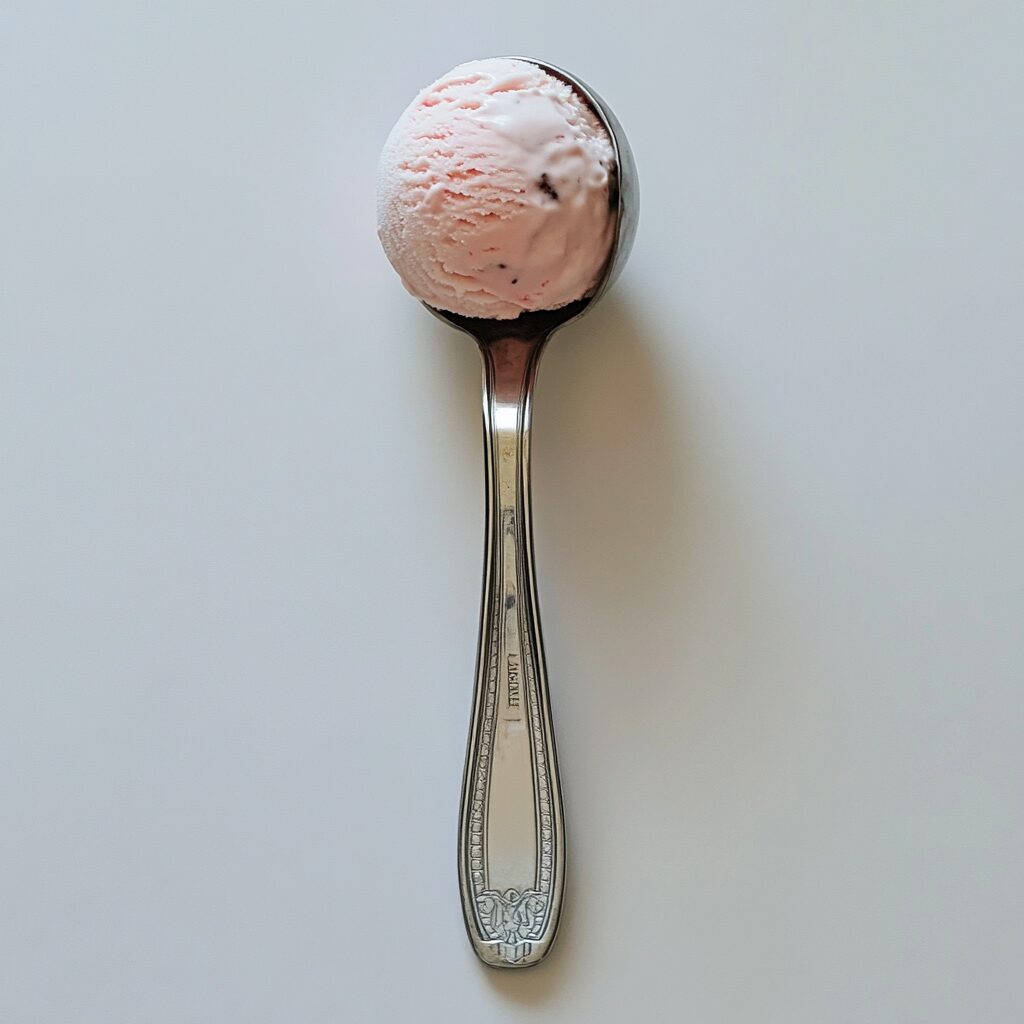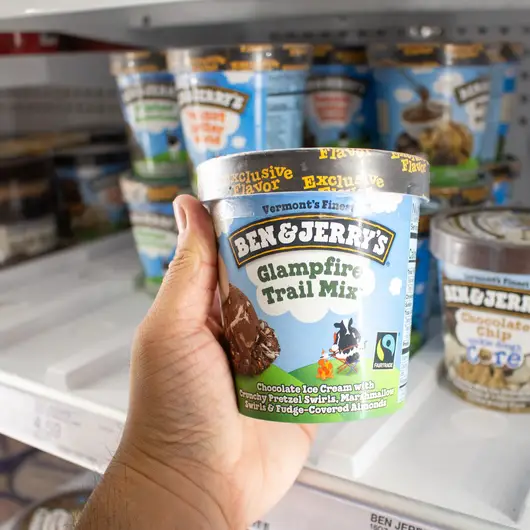We’ve all been there: excitedly opening a tub of ice cream, only to find it covered in frost and tasting like it’s been hibernating since the Ice Age. If you’ve ever wondered why your favorite frozen treat seems to lose its creamy charm faster than you can say “brain freeze,” you’re not alone. It turns out, there’s more to storing ice cream than just tossing it in the freezer and hoping for the best. Let’s dig into the chilling truth about ice cream storage and uncover the mistakes you might be making.
The Door-able Mistake
First things first: if you’re storing your ice cream in the freezer door, you’re giving it a front-row seat to temperature fluctuations. Every time you open the freezer, that pint of rocky road goes on a mini roller coaster ride of freeze and thaw. According to the International Dairy Foods Association, ice cream should be kept at a consistent temperature of 0°F (-18°C) or colder. The freezer door is like the party zone – lots of action, but not great for maintaining a chill atmosphere.
Instead, nestle your ice cream in the back of the freezer, where it’s coldest and least affected by the warm air that rushes in every time you’re on a snack hunt. Think of it as giving your ice cream its own private igloo away from the hustle and bustle.
The Lid Flip Flop

You scoop, you enjoy, you close the lid – simple, right? Not quite. If you’re just slapping the lid back on without a second thought, you’re inviting unwanted air into your creamy paradise. Air is the arch-nemesis of ice cream, leading to those pesky ice crystals that make your dessert feel more like a snow cone.
Here’s a pro tip: After scooping, press a piece of plastic wrap or wax paper directly onto the surface of the ice cream before replacing the lid. This extra layer acts as a barrier against air exposure, keeping your ice cream smoother for longer. It’s like tucking your ice cream in with a cozy blanket – sweet dreams, indeed!
The Temperature Tango
Your freezer isn’t just a cold box – it’s a precision instrument when it comes to ice cream storage. If you haven’t checked your freezer’s temperature lately, you might be subjecting your frozen treats to a less-than-ideal environment. The sweet spot for ice cream storage is between -5°F and 0°F (-20°C to -18°C). Any warmer, and you’re on the fast track to texture town, population: icy crystals.
Invest in a freezer thermometer and do a regular check-up on your appliance’s performance. Your taste buds (and your ice cream) will thank you for maintaining that perfect frosty temperature.
The Scoop Soup Situation
We get it – sometimes you want your ice cream to be perfectly scoopable right away. But leaving it out to soften is a slippery slope. Once ice cream melts, even partially, its structure changes. Refreezing it doesn’t magically restore its original texture. Instead, you end up with larger ice crystals, which translate to a grainy texture that’s about as appealing as sand in your swimsuit.
If you absolutely must soften your ice cream, do it in the refrigerator for about 10-15 minutes before serving. For the impatient among us, try using a warm ice cream scoop or letting it sit at room temperature for just a few minutes. Remember, the ideal serving temperature is between 6°F and 10°F (-14°C to -12°C), so aim for that sweet spot of scoopability without crossing into meltdown territory.
The Expiration Date Exaggeration
Here’s a scoop of truth: that expiration date on your ice cream isn’t a suggestion – it’s more like a “best by” guideline. While ice cream doesn’t exactly go “bad” in the traditional sense (thanks to its frozen state), its quality certainly deteriorates over time. Most commercially produced ice creams can maintain their best quality for about 2-3 months past the printed date if stored properly.
But let’s be real – who among us has ice cream sitting around for that long? If you find yourself with ancient ice cream artifacts in your freezer, it might be time for a taste test (and possibly a trip to the store for a fresh supply). When in doubt, use your senses: if it looks off, smells funky, or has more ice crystals than actual cream, it’s probably time to say goodbye.
The Homemade Hullabaloo
For those adventurous souls who churn their own ice cream at home, listen up: your creations need extra TLC. Homemade ice cream lacks the stabilizers and emulsifiers found in commercial products, making it more susceptible to texture changes and freezer burn.
Store your homemade delights in shallow, airtight containers to encourage fast freezing and minimize exposure to air. Consume your masterpieces within 1-2 weeks for the best flavor and texture. If you’re feeling fancy, you can even add a splash of alcohol to your recipe – it lowers the freezing point slightly, resulting in a softer scoop (just don’t go overboard, or you’ll end up with ice cream soup).
The Scoop Selection Snafu

Believe it or not, your choice of ice cream scoop can affect how well your frozen treat holds up over time. Using a warm scoop might make serving easier, but it introduces heat and moisture into your ice cream, potentially leading to those dreaded ice crystals.
Opt for a scoop designed specifically for ice cream – ones with antifreeze liquid in the handle or made from materials that conduct your body heat are ideal. These allow for easy scooping without compromising the integrity of your ice cream. And always make sure your scoop is clean and dry before diving in. Your ice cream deserves better than yesterday’s leftover chocolate chip remnants.
The Flavor Mixing Mishap
We’ve all been there – feeling adventurous and deciding to store different ice cream flavors in the same container. While it might seem like a space-saving hack, this practice can lead to a flavor free-for-all that nobody asked for. Not to mention, opening the container more frequently to access different flavors exposes all of them to more air and temperature fluctuations.
Keep your flavors separate and pure. If space is an issue, consider investing in smaller containers or – here’s a wild idea – finishing one flavor before opening another. Your taste buds will appreciate the unadulterated flavors, and your ice cream will thank you for the consistent storage conditions.
The Power Outage Panic
When the lights go out, it’s not just your Netflix binge that’s interrupted – your ice cream’s life is on the line too. Many people make the mistake of opening the freezer during a power outage, letting out precious cold air, or worse, assuming everything needs to be tossed once the power returns.
Here’s the scoop: a full freezer can maintain its temperature for up to 48 hours if left unopened. If your ice cream has maintained a slushy consistency or still has ice crystals throughout, it’s generally safe to refreeze. However, if it’s completely melted or has been above 40°F for more than two hours, it’s time to say goodbye. Remember, ice cream is a perishable product, and food safety should always be your top priority – even if it means parting ways with your favorite pint.
Armed with these insider tips, you’re now ready to elevate your ice cream storage game to professional levels. Remember, proper storage isn’t just about preserving your frozen treats – it’s about respecting the craft and ensuring every scoop is as delightful as the first. So go forth, ice cream enthusiasts, and may your freezers be forever at the perfect temperature and your ice cream always creamy and delicious. Just don’t blame us if your newfound expertise leads to more frequent ice cream purchases – after all, practice makes perfect!

